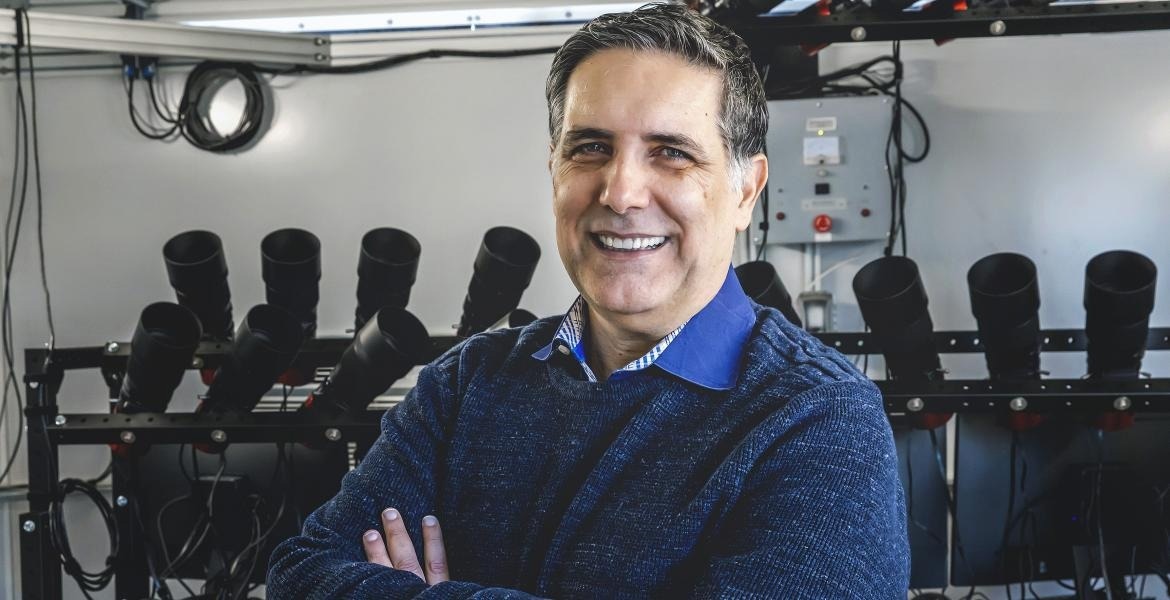
Roberto Furfaro. Image Credit: University of Arizona.
Roberto Furfaro, a University of Arizona professor of systems and industrial engineering, has received an award of $4.5 million to head the progress of enhanced guidance, navigation, and control systems for autonomous vehicles running at hypersonic speeds. The three-year proposed study is supported by the Joint Hypersonic Transition Office through the University Consortium for Applied Hypersonics (UCAH).
Hypersonic speed—of Mach 5 or higher—is speed that surpasses by five times the speed of sound. As the United States aims to create hypersonic technologies, research in the domain has never been more crucial.
Many conventional systems are designed using linear theory, and are not designed to fly or intercept at that speed. There are a lot of things happening in hypersonic flow that are so nonlinear that they are not fully understood, and that we need to characterize if we want to design systems that work under these conditions.
Roberto Furfaro, Project Lead and Professor, Systems and Industrial Engineering, University of Arizona
When a car is traveling at 80 mph, a split-second delay in the driver’s decision-making can have disastrous outcomes. Hypersonic vehicles, which travel thousands of miles per hour and face further conditions such as extreme heat and shockwaves, have even less leeway.
The University of Arizona hosts the Arizona Research Center for Hypersonics, where scientists perform simulations and wind tunnel tests to gather insight into how vehicles act in extreme situations.
The artificial intelligence (AI)-driven guidance, control, and navigation techniques Furfaro and his team formulate will serve as the “brain” of hypersonic vehicles—including interceptors, which are high-speed, navigable vehicles built for defense against enemy aircraft.
“This investment is a major win for our burgeoning hypersonic research program,” said David W. Hahn, the Craig M. Berge Dean of the College of Engineering. “Roberto has a broad range of expertise in areas including space flight mechanics and machine learning, making him and his team exceptionally well qualified to lead this effort.”
To teach hypersonic systems to steer and react to very complex, high-speed scenarios on their own, the researchers are using a kind of machine learning known as meta-reinforcement learning.
With meta learning, we can train it not only on one scenario, but on many scenarios. The system is able to learn over a distribution environment, and every time it converges faster to the next one. By enabling this continuous learning, we are basically able to have a system that continually adapts.
Roberto Furfaro, Project Lead and Professor, Systems and Industrial Engineering, University of Arizona
A Strong Team Builds a Test Environment
University of Arizona alumni Brian Gaudet, a research engineer in the university's Space Systems Engineering Laboratory, has played a critical role in creating and executing the AI system.
Other collaborators and co-investigators include aerospace and mechanical engineering professor Samy Missoum, who is working on Department of Defense-sponsored research to define hypersonic settings, and materials science and engineering professor Erica Corral, who is the co-director of industrial and national lab engagement and workforce development for UCAH’s Consortium Engagement Board.
Furfaro will also partner with aerospace and mechanical engineering faculty members Alex Craig and Jesse Little, who work in experimental aerodynamics, and Kyle Hanquist, an assistant professor in the same department who is an expert in computational fluid dynamics. Other collaborators are at the University of Texas at Austin and Raytheon Missiles and Defense.
The University of Arizona has a nationally prominent hypersonics research program, which received $10 million in federal and state support in 2021 to enhance our research facilities.
Robert C. Robbins, President, University of Arizona
“Many of the field's top experts agree that artificial intelligence will play an increasingly important role in the advancement of the field, and Professor Furfaro's receipt of this highly competitive grant will bring together many areas of expertise to advance this critical area,” Robbins added.
The scientists will utilize this data—collected from simulations and wind tunnel tests concerning how vehicles act in hypersonic flow—to define and produce a simulated setting for teaching the adaptive brain of the system.
We're incredibly supportive of the University of Arizona’s work in developing hypersonic technologies and talent. The advancements Professor Furfaro and his team will make to guidance, navigation, and control systems will directly impact our nation’s ability to develop advanced hypersonic capabilities.
Wes Kremer, President, Raytheon Missiles & Defense